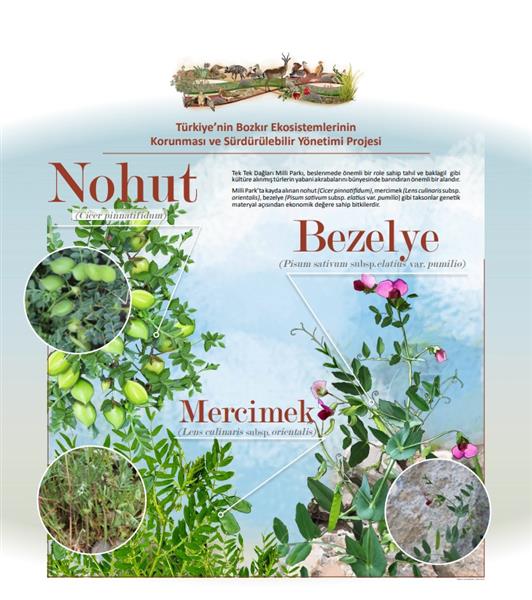Project Areas

The Conservation and Sustainable Management of Turkey’s
Steppe Ecosystems Project (GCP/TUR/061/GFF) is implemented in three pilot
project sites within the boundaries of Şanlıurfa, namely Kızılkuyu Wildlife
Reserve, Tek Tek Mountains National Park and Karacadağ Steppes. These three
project sites are also conservation priority areas hosting large steppes in
Turkey, which are relatively unfragmented and uniform.
Kızılkuyu Wildlife Development
Kizilkuyu Wildlife Development Area was declared in 2006
according to the 4915 number of Law. The Wildlife Development Area status is
refer Category IV in the scope of IUCN conservation categories. It corresponds
to the category “Habitat/Species Conservation Area”. It is managed in order to
ensure effective conservation and sustainable management of steppe species and
habitats, especially gazelles (Gazelle marıca).
The border of the Kızılkuyu Wildlife Development Area was
revised with the Presidential Decision dated 01.06.2020 and numbered 2589 and
its new area was published in the Official Gazette dated 02.06.2020 and numbered
31143 as 15,337 hectares.


Tek Tek Mountains National Park
Tek Tek Mountains National Park was
declared as a National park in 2007 according to the National Parks Law No.
2873. 1b of the World Union for Conservation of Nature (IUCN) conservation
category. It corresponds to the category. It is an important protected area
that contains examples of lowland steppes and shrub habitats in Şanlıurfa. The
National Park is important in terms of steppe biodiversity. It is also
important habitat of the wild relatives of the cultivated species, as well as
the Menengic-Wild pistachio (Pistacia palaestina Boiss) species, which spreads
naturally as a pure population in an area of 2,255 ha. In terms of historical
and archaeological values, it is a region that dates back to ancient times
(Epi-Paleolithic Period, 12000-10000 BC) and contains very important areas and
ruins.
Karacadağ Steppes
It is one of Turkey's 305 Important
Natural Areas. Karacadağ is an extinct volcanic mountain that lies mostly
between the southwest of Diyarbakır and the northeast of Şanlıurfa. Especially
ıt ıs the home for crop wild species of culltivated species, the area does not
currently have a conservation status. The most important feature is that makes
Karacadağ important is that it is an important habitat of crop wild relatives
of many cultivated species. The fact that the ancestors of lentils, chickpeas,
plums and wheat are in the region and it is one of the first areas where agriculture
is started in Karacadağı.






